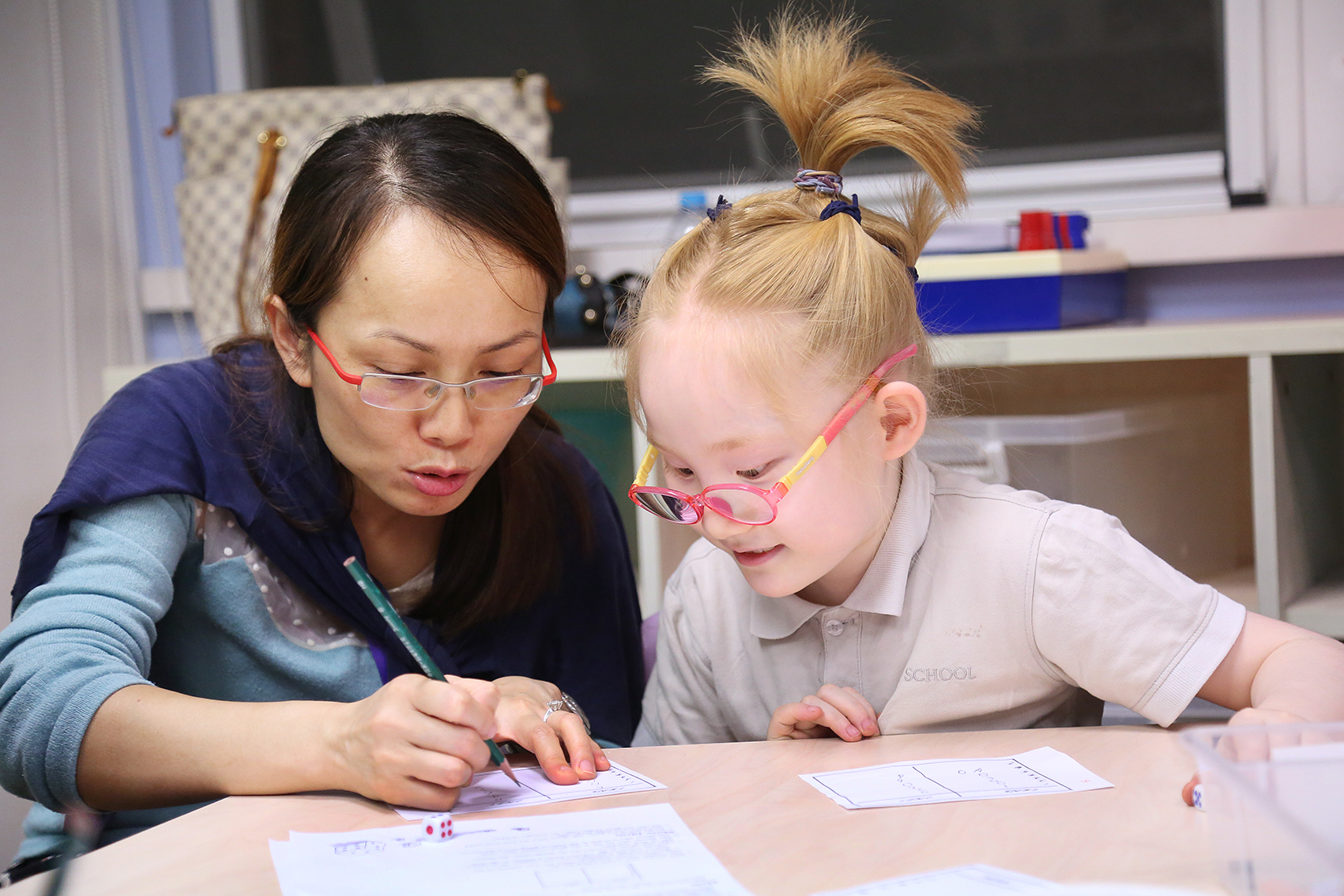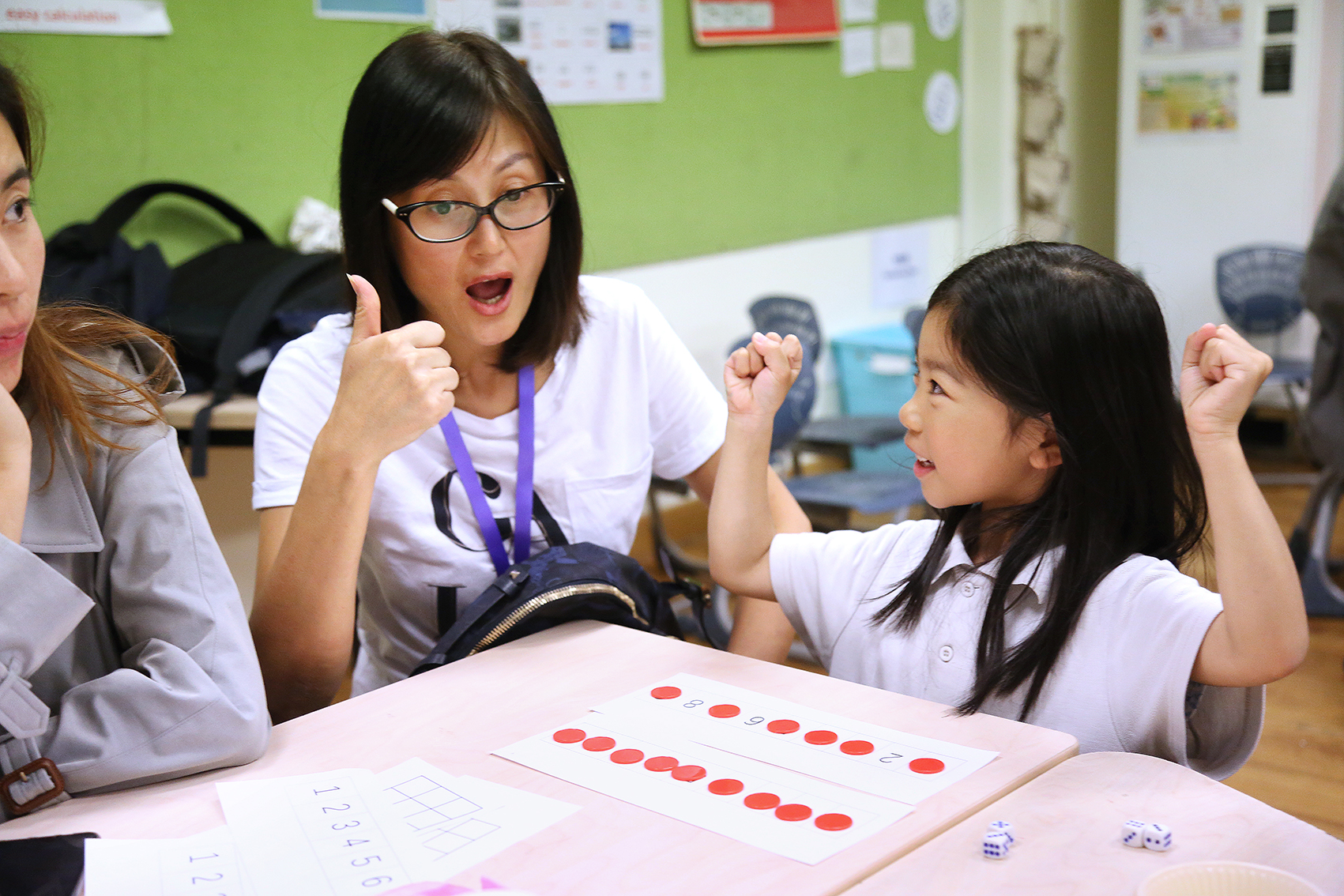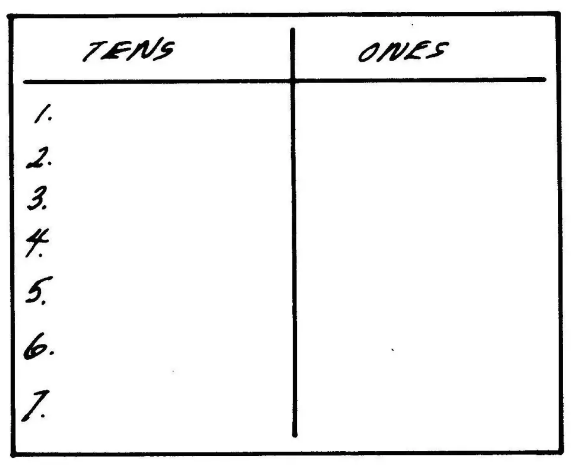Every year, Pao School holds a fun-packed maths party where students have the chance to sharpen their math skills. The evening party is a special time for the Pao community, as the kids both cooperate with their parents and face them off against them in exciting math competitions. It's a great opportunity to deepen ties among students, teacher and families in the Pao community. No wonder graduates of the primary school always have fond memories of this event!

According to Fang Qi, Head of Primary Maths, this year's maths party was held with the Year 1 students and also the newly mixed classes of Year 3 and Year 4. It included a pizza party and two intriguing math games. The evening party is a special time for the Pao community, as the kids both cooperate with and face off against their parents in these exciting math games. After everyone had their fill of pizza, it was time for the math games.
Teachers introduced the two games in both Chinese and English. Once the children and their parents understood the rules of the games, the competition officially began.

The math games appeared straightforward, but they actually required a bit of strategic thinking. There was no guarantee that parents would prevail over their children, despite the parents' advantage in mathematical knowledge. Competition grew heated, but it was all in good fun: Everyone exhibited good sportsmanship and team spirit. The children especially enjoyed challenging their classmates and even their teachers.



The family maths party has been held in Pao School for a decade now. The activity incorporates important mathematical concepts, while encouraging cooperation among students and between parents and the school. It is an opportunity to both help students learn about math and strengthen their relations with their parents. Further, through the maths party, the students get a chance to discover how much fun mathematics can be; it doesn't just have to be about figuring out math problems with a paper and pencil. Over the years, we have evolved the program at the suggestion of parents, and the interaction between students and parents is now better than ever. For next year, we may continue broaden the scope of this activity beyond mathematics. We hope to identify more ways in which everyone can have fun while accomplishing our educational objectives.
Crick Chen, the Primary Deputy Principal



Below are the math games that Year 1 and Year 3 students played at the party. We hope that moms and dads reading this article can play these games at home with their kids.

Why: To practice basic addition facts and mental arithmetic
How:
A game for 2-4 players
1. Give a playing strip to each player or have each person write out the numerals 1 through 9 on paper.

2. Players take turns rolling two dice.
3. On each turn the player may cover either the sum rolled on the die or any two numbers that are still uncovered and that add to the sum rolled.
For example, if a sum 9 is rolled first, the player may cover:9, or 1 and 8, or 2 and 7, or 3 and 6, or 4 and 5.
4.Later in the game if the sum of 9 is rolled again and the 5 is already covered, then the player cannot use the 4 and 5 combination and must play one of the other open possibilities.
5. When a player cannot play, he or she is out and has a score of the sum of the uncovered numbers.
6. Play continues for everybody else until everyone is out.
7. The last person to go out will not necessarily win; the person with the lowest score wins.
TOOLS:
2 dice
Playing Strips
Beans or other markers, or
Pencil and paper
Why:To practice place value and estimation skills.
Both skill and chance play important roles in this game. The dice rolls make it difficult to use a consistent winning strategy, However, an intuitive understanding of probability, or what usually happens, will allow children to find a strategy that will be successful more often than not. Development of estimation skills will increase a child’s chances for success in other areas of mathematics.
How:
A game for 2-6 players
1. You will need one die for the group and a scoresheet for each person in your family, like this one:

2. Each person takes a turn rolling the die
3. The number may be written in either the tens’ column or the ones’ column of the scoresheet.
4. When a number is entered in the tens’ column, “0”is written next to it in the ones’ column. Thus, 4 written in the tens’ column counts as 40.
5. After each player has rolled the die seven times, the players add up their numbers. 6. The players who are left in the game compare their totals. 7. The player who is closest to 100 without going over is the winner.
More Ideas:
At the end of the game, talk about what best total could have been with those seven rolls.
TOOLS:
Pencil
Paper for scoresheets
Dice